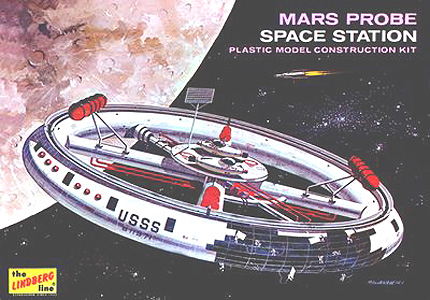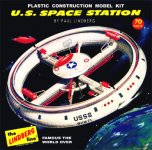Actually, Pete, my hiatus hernia has been giving me jip the last few days and sitting scrunched up over my laptop has probably got a lot to do with it!
Going for a walk in the fresh air, rather than musing on the hypothetical subject of terraforming, may be just what the doctor would order right now!
Going for a walk in the fresh air, rather than musing on the hypothetical subject of terraforming, may be just what the doctor would order right now!
Well I've taken the day off just to make sure I don't get one. I've been installing 8-12ft. sheets of drywall by myself with no help and without any stinkin lifting device for the past week! Total of 90 sheets. Still have 18 to go. Not bad for 64 eh? Just too tired to work today.🙂
I specialize in basement buildouts which are 8' high or less. I am 6'2 so I can reach 8'. I tack a piece of steel stud on the top plate for a shelf, slip the end of the sheet onto it and it supports that end. I can now move back to the other end and quickly tack it up with my self-loading screw gun, 4 screws and I can let go. With butt joints I just tack that piece of stud half way(loosely) on the end of the sheet already up so I still have the shelf.
simple😉
simple😉
Last edited:
If you wanted to just harvest asteroids, comets and debris to make mars hospitable, IE fix the core for protection against radiation, up the gravity and get some more water.
Could it be done using the stuff around the solar system?
Would it be better to take the stuff from around Jupiter so that the asteroid belt outside Mars can remain for some protection?
Asteroid - Wikipedia
Edit:
Just thinking since it's much easier to shove some rock in a direction, rather than defying gravity several times in order to get the same mass.
This can be done, but it is a long term project - 10's of millions of years. I suppose a sufficiently advanced civilization would plan that far ahead. If we had the smarts and were friendly towards each other, we would start now.
You start of by moving something small so that it perturbs the orbit of something larger, and you ratchet this process up until you are able to move something large enough to move a planet that weighs 6x10^24 kg's - ie Earth.
I watched Prof Brian Cox talking about the orbit of Jupiter and how is was much closer to the Sun, but interacting with Saturn, both planets moved outwards - IIRC the process took 500 million years.
In the final phase you can imagine something the size of the moon doing carefully designed loops around the earth so that our orbit is slowly bent outward, and therefore moved away from the sun. You'd have to be careful not to go into too much of an elliptical orbit though.
The other option is to build a giant sun shade. You wouldn't have to shield the whole earth, just an appreciable fraction of it and you'd need to be able to open and close it. Might buy us another 300 or 400 million yrs and we could build it in say 100 to 1000 yrs
To an experienced tradesman, yes. However, I'd have to see you in action to get the full picture.simple😉
Let's face it, your drywalling methods could make a more interesting video than some that have been posted here!

Drywall? We call it plasterboard over here, and it's amazing how much science it involves! 😎
Drywall - Wikipedia
Would I be able to get a vid on here?
Well not a whole lot but you do need to understand the properties of the materials you're working with in order to achieve lasting results.
Well not a whole lot but you do need to understand the properties of the materials you're working with in order to achieve lasting results.
Last edited:
To uniformly cool the planet in a system that’s always on the move, the shade would be installed at Lagrangian point L1 - an area between the Earth and the Sun that’s balanced between the gravity of the two bodies.The other option is to build a giant sun shade.
First conceived by engineer James Early in 1989, the original design was a vast, 2,000 km-wide glass shield - a structure so heavy, it would need to be constructed on the Moon.

An easier, and cheaper, option is to emulate a volcanic explosion. The sulphate particles sent into the atmosphere would hang about for years and reflect sunlight back into space.
Stick it on youtube.Would I be able to get a vid on here?
You could become an internet hit! 😀
Attachments
I'm on it!😀
No hard hat or safety glasses, though.
But for all you folks out there however, don't do it without safety gear....that's reserved for devil may care caution to the wind attention seekers such as in the upcoming vid.😎
No hard hat or safety glasses, though.
But for all you folks out there however, don't do it without safety gear....that's reserved for devil may care caution to the wind attention seekers such as in the upcoming vid.😎
To uniformly cool the planet in a system that’s always on the move, the shade would be installed at Lagrangian point L1 - an area between the Earth and the Sun that’s balanced between the gravity of the two bodies.
First conceived by engineer James Early in 1989, the original design was a vast, 2,000 km-wide glass shield - a structure so heavy, it would need to be constructed on the Moon.
An easier, and cheaper, option is to emulate a volcanic explosion. The sulphate particles sent into the atmosphere would hang about for years and reflect sunlight back into space.
I imagine a shield to be self assembling and made of smaller inter- locking bits so you could add to it over time. And it must be controllable so the reflectors could be opened and closed.
Problem with the volcano method is its short term (few decades at most) and you have no control. Mess it up and it’s the big freeze!
Another problem is that the sulphate particles would destroy the ozone layer, leaving us at the mercy of the Sun's cancer-causing ultraviolet radiation.Problem with the volcano method is its short term (few decades at most) and you have no control. Mess it up and it’s the big freeze!
Ozone depletion has been observed after large volcanic eruptions.
So freeze and/or fry!
That said, the Earth has been cooling for the last 50 million years - it was at least 6-8 degrees warmer 60 million yrs ago. The Decan traps volcanic eruption appears to have been the major cause pushing CO2 levels over 1500ppm. CO2 levels came down after the eruptions stopped with a lot of the carbon being sequestered in India via carbonate deposits (where the Deccan traps are) and then buried beneath the Himalayas when it collided with Asia. Interestingly, the Earth is now on the inside edge of the Goldilocks zone. I would imagine if we had another Decan traps event it would be tickets this time. Given geological time scales, our stay on this planet is quite transitory IMV.
Its good to think about these things.
Deccan Traps - Wikipedia
That said, the Earth has been cooling for the last 50 million years - it was at least 6-8 degrees warmer 60 million yrs ago. The Decan traps volcanic eruption appears to have been the major cause pushing CO2 levels over 1500ppm. CO2 levels came down after the eruptions stopped with a lot of the carbon being sequestered in India via carbonate deposits (where the Deccan traps are) and then buried beneath the Himalayas when it collided with Asia. Interestingly, the Earth is now on the inside edge of the Goldilocks zone. I would imagine if we had another Decan traps event it would be tickets this time. Given geological time scales, our stay on this planet is quite transitory IMV.
Its good to think about these things.
Deccan Traps - Wikipedia
Last edited:
What we need is some proper space stations - rotating ones to produce artificial gravity.
The idea has been around for long enough, even before 2001: A Space Odyssey from 1968, so let's build one.

Wait a minute, someone is actually going to, starting in 2025! 😎
Company plans to start building private Voyager space station with artificial gravity in 2025 | Space
The idea has been around for long enough, even before 2001: A Space Odyssey from 1968, so let's build one.

Wait a minute, someone is actually going to, starting in 2025! 😎
Company plans to start building private Voyager space station with artificial gravity in 2025 | Space
Attachments
Galu, I see one major fault with that space station. It looks boring. The old ones look a lot nicer.
Bonsai, yeah, I've been thinking and if we start assembling asteroids just outside of Mars we could do it remotely! A combined main system consisting of a solar array with scanner to sort which ones are made from what and a powerful laser for a bit of precision work, some mobile robots with grappling hooks for both maneuvering and moving asteroids. Perhaps a sorting and processing unit could work in tandem with the gathering robots and leave behind roughly sorted melted lumps of material, or perhaps even just 3d print bigger bits together.
We have all of this technology available today! No need to wait or send more useless humans into space, why expose people to risk and radiation when we could just make everything from stuff already in space.
Edit:
We could probably adapt mass into making both earth 2 and 3 before we'd have to get creative!
Bonsai, yeah, I've been thinking and if we start assembling asteroids just outside of Mars we could do it remotely! A combined main system consisting of a solar array with scanner to sort which ones are made from what and a powerful laser for a bit of precision work, some mobile robots with grappling hooks for both maneuvering and moving asteroids. Perhaps a sorting and processing unit could work in tandem with the gathering robots and leave behind roughly sorted melted lumps of material, or perhaps even just 3d print bigger bits together.
We have all of this technology available today! No need to wait or send more useless humans into space, why expose people to risk and radiation when we could just make everything from stuff already in space.
Edit:
We could probably adapt mass into making both earth 2 and 3 before we'd have to get creative!
Last edited:
Couldn't we just build it here and give it a good spin like a hula hoop to send it on it's way? We could use the venerable Canadarm, no? 😀
We have the technology to manoeuvre and move asteroids?We have all of this technology available today!
Now, that's what I call rock and roll!

And rock-'n'-roll in space, no less!
Not just moving rocks, but doing it using wires and electric motors rather than non-renewable fuel.
I was talking about all of those things though, the most interesting of these is ore and metal processing IMO. For the rough stuff that doesn't hold enough material value they could probably make a large scale printeable foam-rock that could be used to manufacture base structures and the like.
I am certain that we'd be better off doing all the manufacturing in space and just use the valuable fuel we have to move people about when everything is ready to use.
Start small and upscale!
Not just moving rocks, but doing it using wires and electric motors rather than non-renewable fuel.
I was talking about all of those things though, the most interesting of these is ore and metal processing IMO. For the rough stuff that doesn't hold enough material value they could probably make a large scale printeable foam-rock that could be used to manufacture base structures and the like.
I am certain that we'd be better off doing all the manufacturing in space and just use the valuable fuel we have to move people about when everything is ready to use.
Start small and upscale!
Last edited:
KaffiMan, you are a "strange undisciplined dreamer of great things". 😀
Just like Larry Niven, whom I mentioned earlier in the thread.
In his fictional 'Known Space' universe, his 'Belters' make their living by mining ores from asteroidal rocks.

Belters get their name from the fact that they inhabit the main Asteroid Belt, as well as the Lagrange Point trojan asteroids of the outer planets.
As Belters operate alone in their 'Singleships', they first had to create 'Confinement Asteroid', a habitat with spin gravity that permitted safe gestation of their children, and 'Farmer's Asteroid', the Belt's primary food source.
Just like Larry Niven, whom I mentioned earlier in the thread.
In his fictional 'Known Space' universe, his 'Belters' make their living by mining ores from asteroidal rocks.

Belters get their name from the fact that they inhabit the main Asteroid Belt, as well as the Lagrange Point trojan asteroids of the outer planets.
As Belters operate alone in their 'Singleships', they first had to create 'Confinement Asteroid', a habitat with spin gravity that permitted safe gestation of their children, and 'Farmer's Asteroid', the Belt's primary food source.
Attachments
- Status
- Not open for further replies.
- Home
- Member Areas
- The Lounge
- What is the Universe expanding into..





